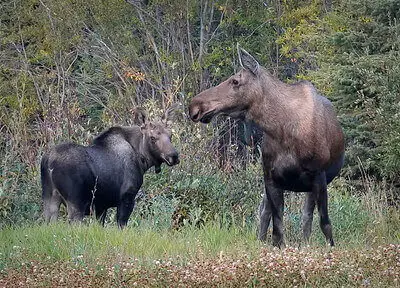Disclosure: We may earn commissions if you purchase products after clicking on a link from our site.
Are you looking for the best moose hunting tips to sharpen your hunting skills? Are you a beginner moose hunter searching for moose hunting techniques to take your hunting to the next level? These moose hunting tips will not only improve your moose hunting but also give you the knowledge to not return home empty-handed after the hunting season.
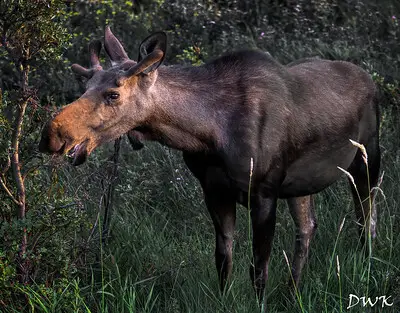
Best Moose Hunting Tips
1. Don’t Glass From the Same Spot You Call
When you have ended calling, always change the location you will glass the area from so that you are upwind of where you were calling. If a bull heard you, he will remember the spot you heard you and will come to investigate the sound. He just might circle downwind of where he heard the calls. You will stay undetected if you switch the spots you call from.
2. First 10 Last 10 Rule
There is an old moose hunting saying that goes like this “If you are not prepared to stay overnight with your moose in the field, you are not prepared to kill a moose.”
There will be times when you will get a moose in the first 10 minutes and the last 10 minutes of light. Many times, you will be in the wet swamp in the dark in the mornings and evenings. That’s when the right hunting gear comes into play. Additionally, you can prepare for the night by setting up an open fire as you prepare for an evening under your cover.
3. Using The Right Bullet
It is more of picking the right bullet that will penetrate the animal’s vital organs than choosing a heavy-caliber rifle. To kill a moose, you don’t need a heavy-caliber rifle. Always opt for a long, tough heavy caliber bullet with a high sectional density. It will not expand too quickly and will remain intact after impact.
4. Use a Cow Moose Decoy
You can get the attention of a bull moose by setting up a cow moose decoy. It can be helpful when you want to stalk a bull out in the open or when there is an incoming bull. The cow moose decoy will get the attention of the bull moose while you position yourself for a good shot. This is one of the best moose hunting tips used by moose hunters.
5. Exercise Patience When Calling Moose
Moose are very curious animals, but won’t be rushed to satisfy their curiosity. It could take days for a moose to investigate your calling. You will have to be patient and wait until he decides to come to find out, which may be hours or days later.
6. Use a Trail Camera
You can set up a trail camera in an area to study the activities of moose to give you more information about moose hunting. You can read about the best trail cameras in this article.
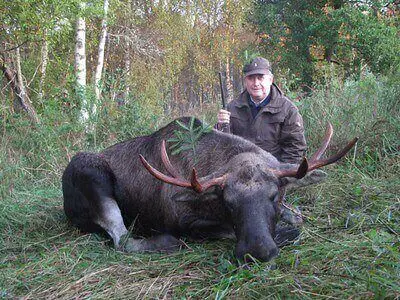
7. Field Dressing a Moose
Although a big knife may be an item in your field dressing kit, it is not necessary for field-dressing moose and other big game animals in Northern America. A 4-inch blade can adequately get the job done. Any knife longer than that can be awkward to handle in the cavity of the moose and there’s the possibility of cutting through its viscera. If you are looking for field dressing kits, we reviewed the best field dressing kits on the market today in this article.
8. Old Shoulder Blade Bone
To imitate a bull moose thrashing a tree with its antlers, you can use an old shoulder blade bone from a moose you killed in the last hunting season to rake leaves. This works very well to attract the attention of a moose and is one of the best moose hunting tips to try while hunting moose.
9. Learn To Walk Like A Moose
Moose have a good sense of smell and hearing. It’s unlikely that you will close in on a moose by foot without it hearing your movement. The good news is you don’t have to be completely silent, rather try to sound like a moose when you walk. Don’t wear any clothes that will make any unnatural rustling sounds when it is brushed against branches or grass.
Also don’t carry any metal items in your pockets, on your gun sling, or clipped to your jacket. Make sure your pants are secured so they don’t clink or clank while walking. Do not try to sneak. Moose are aware of what sneaking sounds like as their predators sneak on them all the time. Humans are not good at sneaking.
You will have better chances if you step quietly while moving in a natural stride. The sounds you make from your natural strides will come off to the moose as those of another animal.
10. Get Help
A good source of valuable information about the moose in the area you are hunting is conservation officers, forestry workers, trappers, biologists, and just regular local folks in the area. Talk to them and you might be surprised at the amount of information they can give you about moose behavior in that area.
Pick up the phone and call the forestry workers, conservation officers, and biologists to get information. You can also stay at a local motel close to the area you will hunt to talk to the locals in that area. Going the extra mile might get you the information you couldn’t have gotten any other way.
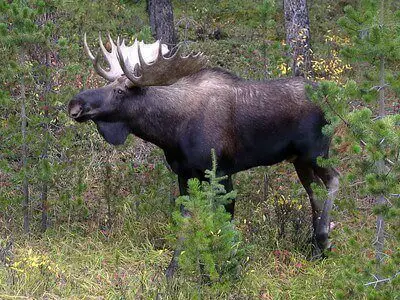
11. Recognizing A Pissed-off Moose
Moose uses its body language to show that it is upset with your human presence. It will pull its ears back flare its long hair along its neck and hump the way a dog does when looking for a fight. The moose might also growl at you and lick its lips. If you experience this, quickly back away and try to get a large object between you and the moose.
12. Take Along Map, GPS, Or Compass
Even if you know the area very well, it’s always a good idea to take along the map of the area that you will be hunting in. You should also carry a good and reliable GPS unit with spare batteries and/or a compass. As a hunter, these are as important to you as your weapon.
13. Call in a Bull By Breaking Brush
Moose will mark their territory, and show dominance by thrashing bushes, saplings, and small trees with their antlers. They will also spread their scent around an area during the rut to also show their territory. You can use this behavior of a moose to call in a bull.
Break off a few dry branches of an evergreen tree at its base to make sharp crackling sounds. Domineering moose in the area will come to investigate the noise.
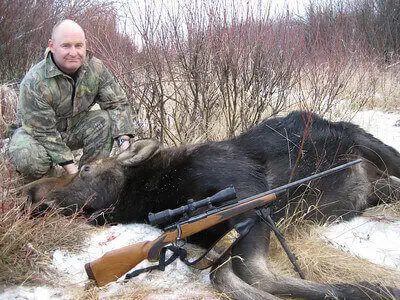
14. Don’t Hunt the Trail
When you find a trail covered with old moose prints and droppings, don’t remain on that trail and hunt. Moose only travel open areas at night and usually wait until it is dark before they get on the trail.
If you find a trail with moose signs of activity, track the prints and determine where it re-entered the bush. If you find that spot, the moose is still likely to remain bedded there during the warmer hours of the day. Look up that spot on your map or GPS for a water stream, swamp, or other hot moose spots in the bush.
If you find one of these, circle the bush until you get to the spot without following the moose’s prints. Set up your stand and wait. Make a couple of soft bull grunts or female calls as you get closer.
15. Moose Calling Is Not For the Timid
When you are calling a moose, always do it with caution. There is a good chance that you could attract a 1,000-pound moose with huge antlers. You could also get the attention of predators like bears who see moose as food. When you are calling moose, just be prepared to take quick action if it results in attracting the wrong animal.
16. Make Your Moose Thrasher
You can make your own moose thrasher that is simple and easy to transport. Insert a one-and-a-half foot length of wooden dowel into the mouth of a 40-0ounce plastic bottle. Then wrap duct tape around the neck and the dowel until the dowel is secured to the bottle.
Then cut off the bottom of the bottle with a pair of scissors. You have successfully made your thrasher. To use it, hold the call by the wooden handle and rake it through a bush or across the ranches of a sapling.
17. Using a Big Rifle Scope
Larger rifle scopes will produce brighter and sharper images as they receive more light than normal-size rifle scopes. However, this does not imply you should always take along a large rifle scope. If you are hunting from a tree stand or spotting and stalking, then it is a good option. Hunting from a treestand requires additional skills and you can read about how to hunt from a treestand in this article. You can also read a review of the best hunting riflescopes from this link.
If you will still-hunt, they will be a problem as the large and heavy lenses make them heavy and not ideal to carry when you are moving through the open country. Moreover, larger rifle scopes need higher mounts than standard scopes which makes it more difficult to acquire a proper sight picture when you need to take a quick shot. How to mount a scope on your rifle is not difficult but requires a set of steps that you can learn from reading this article.
18. Make Trail Markers
You can make your trail markers by wrapping the wings of simple wooden clothespins with half-inch strips of reflective tape. Attach them to branches along the route you use to get to your stand in the dark and use a flashlight to pick them out in the morning. Additionally, you can waterproof them by dipping them in polyurethane if you plan on leaving them in the woods for a period of time.
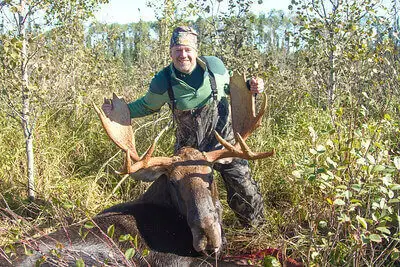
19. When Attacked By a Moose
If you are attacked by a moose, the best option is to run away as fast as you can. They won’t run after you very far once you are no longer a threat. Putting an object like a tree between you and the moose is a good idea as they can’t circle trees as fast as you can.
If you are knocked down by a moose, curl up in a ball, protect your head with your hands and be still. Remain in that position and don’t move until it has moved to a safe distance away from you.
20. Put Your Treestand On The Eastern Side
Hang your treestand on the clearing’s eastern edge if you can only hang one stand overlooking a clearing you think moose frequent. Most winds in moose habitats blow from the west, thereby putting you downwind of the moose in normal weather conditions. You can read the review on the best climbing treestands from this link.
21. Moose Hunting In Big Wind
It is easier to get yourself into position for a shot at a moose when there is a big wind if you will approach from downwind. With a big wind, they won’t pick up your human scent and they won’t hear most of your movements. You should love hunting moose in big winds although upland bird hunters don’t like hunting in big winds while duck hunters love it.
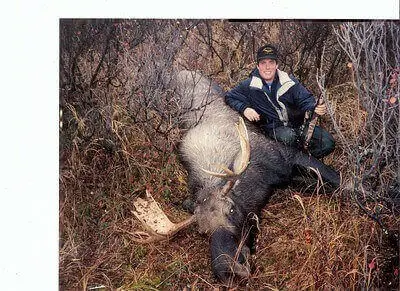
22. Moose Hunting By Canoe
You can access the unpressured moose habitat using a canoe. Moose love water and by using a canoe, you can scan banks and shorelines for moose standing hidden in the brush. Keep your eyes out for moose when you paddle up or float down rivers that connect ponds and small lakes. Moose like to travel along these streams because they flow through flat terrain which is easier for them to traverse.
23. Grunt As If It’s a Real Grunt
When challenging each other and when trying to win cows, bull moose grunts. They are short and deep grunts that last for two or three seconds. Use your grunt call like you use a musical instrument. Put your feelings into it when you blow. Don’t just blow sound through it for the sake of calling. Put in the effort and put your feelings into your grunt calls.
24. Mimic the Sound of Bull Pissing
When you imitate a bull pissing, this convinces a moose that there is a rival in his territory. Do this by filling a large plastic container with water. Then pour it back into the water from the height of your chest. Use this sparingly to get the desired effect and also be patient to wait for a curious bull to show up.
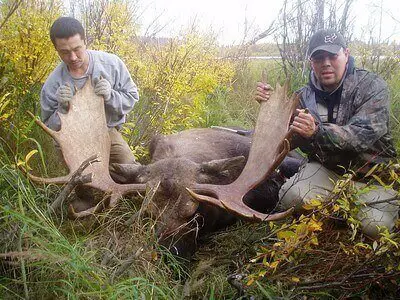
25. Flash a Moose
If you spot a bull moose far away from you or in a cover that is too thick to shoot through, “flash” him. To show aggression toward a rival, a bull will shake his head at a rival that is “flashing” him with the white of his antlers.
With a bull’s poor eyesight, you can mimic this by waving a light-colored fabric, such as a plastic bag or t-shirt. That may be all it takes to bring him into shooting range.
26. Field-judge A Moose
When you field-judge a moose’s antlers, the best view is from the front when a bull is holding its head so the rack is vertical. You will discover that top-scoring antlers lie flattered rather than cupped up.
Judge racks based on the overall antler mass because it is hard to count points in the field. The width is not as important as well-developed palmation, and look for broad brow palms with three or more points.
27. Stop a Spooked Bull With a Cow Call
If you spooked a bull and he is running away, you can make a long and loud cow call. This sound might cause him to stop to figure out the origin of the sound which will buy you some time to take a quick shot at him.
28. Hunting With Sights
If you use open sight to hunt, it can be difficult in low-light conditions to quickly align your front sight in the rear’s sight’s notch. By painting the top of your front sight with fluorescent fly-tying lacquer, you will have a better chance of keeping your shot from going high when you take quick shots.
29. Fog-free Rifle Scope
Try to prevent your rifle scope from developing fog which will be difficult to clear. Avoid keeping your rifle in a warm tent or cabin overnight. The inside of your rifle scope could develop fog if the next morning is cold and damp. Keep your rifle in the trunk of your car. It will be at the same temperature as the outside air in the morning and no condensation would have occurred.
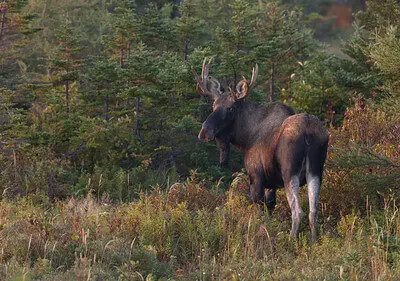
30. Return To The Same Area
Like many animals, moose are very consistent in their seasonal movements year in, and year out. Returning to an area that has bulls, season after season, is a good hunting idea even if you startled a moose there or missed one the season before according to Wayne Kubat, an Alaska Master Guide and owner of Alaska Remote Guide Service.
31. Lookout For Camp Bulls
If you are hunting moose in the backcountry, always keep on the lookout for moose near your camp. They are often attracted by the sounds of chopping wood, pounding in tent stakes, or breaking branches when you clear campsite ground.
32. Use Your Voice To Cow Call
You can use your voice to make cow calls. They are short calls for up to two minutes. Cow calls are high-pitched groans with a moaning “eerrrrrr” sound. To make these calls with your voice, pinch your nose, cup your hands over your mouth, start your “err” sound at a lower pitch and gradually raise the pitch in the middle of the call, holding the “r”, while you waver your tongue before lowering the pitch as you taper off into silence. You can read a review of the best game calls from this link.
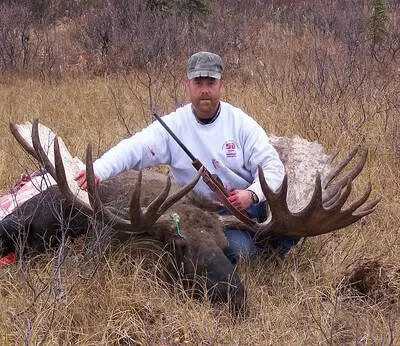
33. Moose & Dogs
Give a moose a good bit of territory if you have a dog with you. Moose consider dogs as their enemies and might kick them, according to the Alaska Department of Fish and Game.
The Bottom Line
Moose meat is tasteful and this makes moose one of the most hunted animals. Whether you are looking for moose hunting tips for beginners or you are an experienced moose hunter just curious to know what are the moose hunting techniques out there, these moose hunting tips can help you take more moose meat to your home during the hunting season. Additionally, you can improve your turkey hunting skills by reading this article on the best turkey hunting tips.
